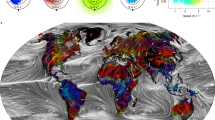Abstract
We developed a game-theoretic model for wind-dispersed seed production to examine the seed mass–dispersal ability relationship and the evolutionarily stable distance of seed dispersal in terms of exploitation of safe sites. We assumed trade-offs between masses of the embryo (including albumen) and the wind-dispersal structures per seed, and also between seed mass and number of seeds per parent. We showed that ESS wing-loading is independent of embryo mass; that is, heavy seeds are not poor dispersers if the cost of producing wind-dispersal structures per unit area is constant. The ESS embryo mass per seed depends only on the factors which determine the probability of a seedling being established from a seed. However, wing-loading was found to increase with embryo mass when the change in length was isometric and there was a negative correlation between seed mass and dispersal ability. Thus, the area–mass relationship in wind-dispersal structures may have large effects on the ESS production of wind-dispersed seeds. On the other hand, given that only a limited number of adults can be established at a safe site, the ESS seed dispersal distance depends on the relative degree of sib to non-sib competition. A parent disperses its seeds over a wide area to exploit many safe sites if sib competition is strong. However, it disperses its seeds within a narrow area if the mean number of parents per unit area is large, or if non-sib competition is strong. Thus, in addition to an upper limit on the number of adults per safe site, the degree of sib and non-sib competition may be important for the ESS dispersal distance in wind-dispersed seeds.
Similar content being viewed by others
References
Augspurger, C.K. (1986) Morphology and dispersal potential of wind-dispersed diaspores of neotropical trees. Am. J. Bot. 73, 353–363.
Augspurger, C.K. and Franson, S.E. (1987) Wind dispersal of artificial fruits varying in mass, area, and morphology. Ecology 68, 27–42.
Augspurger, C.K. and Hogan, K.P. (1983) Wind dispersal of fruits with variable seed number in a tropical tree (Lonchocarpus pentaphyllus: Leguminosae). Am. J. Bot. 70, 1031–1037.
Benkman, C.W. (1995) Wind dispersal capacity of pine seeds and the evolution of different seed dispersal modes in pines. Oikos 73, 221–224.
Cohen, D. and Morto, U. (1989) More on optimal rates of dispersal: Taking into account the cost of the dispersal mechanism. Am. Nat. 134, 659–663.
Frank, S.A. (1986) Dispersal polymorphisms in subdivided populations. J. Theor. Biol. 122, 303–309.
Ganeshaiah, K.N. and Uma Shaanker, R. (1991) Seed size optimization in a wind-dispersed tree Butea monosperma: A tradeoff between seedling establishment and pod dispersal efficiency. Oikos 60, 3–6.
Geritz, S.A.H., de Jong, T.J. and Klinkhamer, P.G.L. (1984) The efficacy of dispersal in relation to safe site area and seed production. Oecologia 62, 219–221.
Green, D.S. (1980) The terminal velocity and dispersal of spinning samaras. Am. J. Bot. 67, 1218–1224.
Greene, D.F. and Johnson, E.A. (1993) Seed mass and dispersal capacity in wind-dispersed diaspores. Oikos 67, 69–74.
Hamilton, W.D. and May, R.M. (1977) Dispersal in stable habitats. Nature 269, 578–581.
Harper, J.L., Lovell, P.H. and Moore, K.G. (1970) The shapes and sizes of seeds. Annu. Rev. Ecol. Syst. 1, 327–356.
Howe, H.F. (1990) Survival and growth of juvenile Virola surinamensis in Panama: Effects of herbivory and canopy closure. J. Tropical Ecol. 6, 259–280.
Howe, H.F. and Smallwood, J. (1982) Ecology of seed dispersal. Annu. Rev. Ecol. Syst. 13, 201–228.
Howe, H.F. and Westley, L.C. (1986) Ecology of pollination and seed dispersal. In Plant Ecology (M.J. Crawley, ed.), pp. 185–215. Blackwell, London.
McGinely, M.A., Smith, C.C., Elliott, P.F. and Higgins, J.J. (1990) Morphological constraints on seed mass in lodgepole pine. Funct. Ecol. 4, 183–192.
Morse, D.H. and Scmitt, J. (1985) Propagule size, dispersal ability, and seedling performance in Asclepias syriaca. Oecologia 67, 372–379.
Morto, U. (1982a) Optimal rates of dispersal. I. Haploid populations. Theor. Pop. Biol. 21, 394–411.
Morto, U. (1982b) Optimal rates of dispersal. II. Diploid populations. Theor. Pop. Biol. 21, 412–429.
Morto, U. (1983) Optimal rates of dispersal. I. Parent-offspring conflict. Theor. Pop. Biol. 22, 159–168.
Murray, K.G. (1988) Avian seed dispersal of three neotropical gap-dependent plants. Ecol. Monogr. 58, 271–298.
Platt, W.J. and Weis, I.M. (1985) An experimental study of competition among fugitive prairie plants. Ecology 66, 708–720.
Schupp, E.W. (1995) Seed-seedling con¯ict, habitat choice, and patterns of plant recruitment. Am. J. Bot. 82, 399–409.
Smith, C.C. and Fretwell, S.D. (1974) The optimal balance between size and number of offspring. Am. Nat. 108, 499–506.
Taylor, P.D. (1988) An inclusive fitness model for dispersal of offspring. J. Theor. Biol. 130, 363–378.
Wilson, M.F. (1992) The ecology of seed dispersal. In Seeds: The Ecology of Regeneration in Plant Commu-nities (M. Fenner, ed.), pp. 61–86. CAB International, Wallingford.
Author information
Authors and Affiliations
Rights and permissions
About this article
Cite this article
Sakai, S., Kikuzawa, K. & Umeki, K. Evolutionarily stable resource allocation for production of wind-dispersed seeds. Evolutionary Ecology 12, 477–485 (1998). https://doi.org/10.1023/A:1006576906198
Issue Date:
DOI: https://doi.org/10.1023/A:1006576906198




